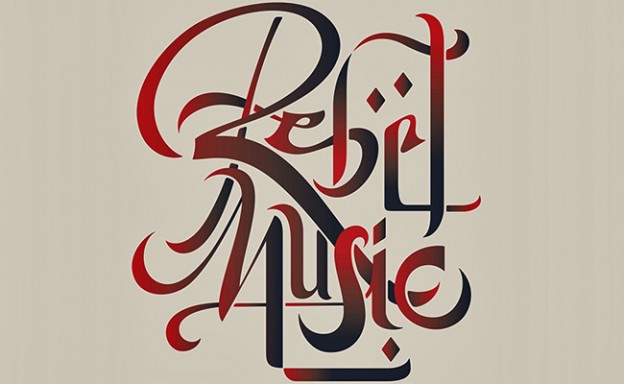The Musicians
Text by Dawoud Kringle
The following are selected biographies of American Muslim musicians.
Art Blakey (a.k.a. Abdullah ibn Buhauna) was born in 1919, and became a full time musician in his teens. He switched from piano to drums in the early 1930s. He played with Chick Webb and Sid Catlett. In 1942 he joined Mary Lou Williams, and later played with Fletcher Henderson. Between 1944-47 he played with Billy Eckstine, Dexter Gordon, Fats Navarro, Miles Davis, etc. It was around this time that he accepted Islam, and took the name (Abdullah ibn Buhauna). In 1947 he traveled to Africa to learn about Islam and his African ancestry. His practice of Islam became central to his life and music. Blakey was reported to have hosted meetings of Muslims in his home. According to one account, Yusef Lateef had accepted Islam during one of these meetings. Blakey also used to hold a prayer session with the musicians in his group The Jazz Messengers before performances. In the 1950’s he performed with Charlie Parker, Miles Davis, Horace Silver, and Clifford Brown. In 1955 Blakey, Hank Mobley, and Silver formed a cooperative group, under the name The Jazz Messengers. This project continued into the late 1980s and served as a springboard for many musicians (e.g. Donald Byrd, Lee Morgan, Woody Shaw, Chuck Mangione, Keith Jarrett, Wayne Shorter, Freddie Hubbard, JoAnne Brakeen, Terance Blanchard, Branford Marsalis, etc).
Kenny Clarke (a.k.a. Liaquat Ali Salaam, “Klook”) enjoyed the reputation as one of the most innovative jazz drummers in the history of American music. Born in 1914, he began playing with Leroy Bradley while in his teens. Later he joined Roy Eldridge, the Jeter-Pilars Orchestra, Lonnie Simmons, Edgar Haynes, and Teddy Hill. While in Hill’s group, he and Dizzy Gillespie experimented with new rhythmic concepts. In the 1940s his association with Gillespie, Thelonious Monk, Charlie Christian, and Bud Powell as a member of the house band at Minton’s Playhouse led to his being instrumental in the development of Be-Bop and it’s revolutionary innovations. After returning to the USA from military service in Europe in 1946, he recorded with Gillespie, Tadd Dameron, Fats Navarro, and others. He was a founding member of the Milt Jackson Quartet and the Modern Jazz Quartet. In 1956 he moved to Paris, where he recorded and performed with Bud Powell, and led the Clarke-Boland Octet. Clarke also performed on several film soundtracks. Although he made only occasional appearances in the USA, he continued to perform, record, and teach in Europe until his death in 1985.
Yusef Lateef (1930-2013) was born in Chattanooga, Tennessee, and began studying music with Teddy Bruckner. He began working with Lucky Millinder, Hot Lips Page, and Roy Eldridge. After moving to Chicago, he worked with Dizzy Gillespie before returning to Detroit where he studied flute and composition at Wayne State University. Lateef embraced Islam in the late 1940’s, after having been introduced to it by Khalid Dawoud. From 1955 to 1959 he led quintets with Curtis Fuller, Wilber Harden and Kenny Burrell. In 1959 he moved to New York where he performed and recorded with Donald Byrd, Grant Green, Charles Mingus, and Cannonball Adderly. As a bandleader, he distinguished himself as a talented multi-instrumentalist and composer. In the 1980s he spent four years teaching (and studying) music in Nigeria. Lateef was one of the first to incorporate elements of Eastern music into American music; creating music greater than the sum of its parts. His pioneering efforts in musical multiculturalism also include the use of instruments such as the rabat, the shenai, the algaita, the argol, and traditional Western instruments such as the oboe and the bassoon. He also made several bamboo and wood flutes tuned to alternate temperaments. In later years Lateef composed symphonies, was commissioned to compose a suite for orchestra and quintet (“The African American Epic Suite”), a piano concerto, and motion picture soundtracks. He released many recordings as a leader, founded a record label, performed as a leader with various ensembles, wrote several books, three plays, and made a considerable reputation as a painter. His academic achievements include several degrees, and a Ph.D. In 1986 he joined the faculty of the University of Amhurst, MA. Unlike some of the early masters of African American music, he continued to develop his music: never allowing it to stagnate (yet retaining a strong connection with its roots). Dr. Lateef essentially invented his own system of music: Autophysiopsychic Music: music that originates from one’s physical, mental, and spiritual self. The term is all-inclusive of the music’s artistic and spiritual greatness, accurately describes its essence and purpose, and offers practical guidance for its practice. His work continued for the remainder of his life.
(Much of the material in this series is from my as yet unpublished book A Garden of Air and Light: The Relationship Between Music and Islamic Spirituality and Culture (c). 2004. Used by DBDBD & MFM by permission of the author).


